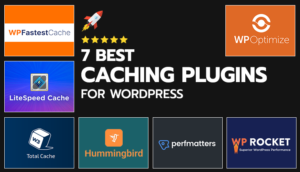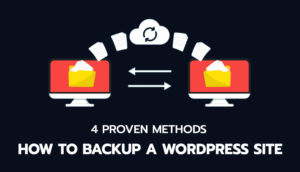Running a business or personal website nowadays means facing more and more cybersecurity risks.
Did you know over 40% of websites get hit by malware every year?
These attacks can do a lot of harm, like stealing customer info, taking over servers, or messing up your website.
It’s really important for website owners to protect their sites. But with hackers getting smarter and their tools more complex, it can be tough to know how to keep your site safe.
In this quick guide, you will learn the essential security tips and tricks you need to keep your website secure. We’ll highlight key vulnerabilities that get exploited, and give you solid steps on how to protect your site.
Let’s get started!
What is Malware?
Malware, short for “malicious software,” represents a category of digital threats that can seriously harm the integrity and performance of computer systems.
Designed with malicious intent, it aims to compromise, damage, and exploit a wide range of electronic devices, including computers, servers, and even mobile devices.
Malware can disrupt a website’s functionality which can lead to server downtime, slow loading times, and even broken features. If left unchecked this can cause big security problems, like data leaks and illegal access to private info.
Common Ways Websites Get Infected
- Outdated software and plugins are common entry points for malware. It’s crucial to regularly update them to fix weak spots and improve security.
- Hosting setups that don’t have good security can easily fall victim to malware. Picking a hosting provider with solid security practices is really important.
8 Ways to Secure and Protect Your Site from Malware
Protecting your website from malware is a vital part of keeping a strong online presence. Since hackers are always updating their methods, it’s essential for website owners to use thorough security measures as below:
1. Regular Website Scanning and Monitoring
Consider using tools such as Sucuri, Wordfence, or SiteLock for regular malware scanning and detection. These services are great for spotting any existing threats or weaknesses on your website, allowing for a quick response.
Additionally, setting up real-time monitoring systems is crucial. They provide instant alerts about any security incidents or unusual activities on your site. This fast detection enables you to take immediate action, helping to prevent or minimize potential damage.
2. Take Regular Backups
3. Keep Software and Plugins Updated
Outdated software is a common entry point for malware attacks. Regularly updating your website’s content management system, themes, and plugins is vital.
Developers frequently release updates to patch security vulnerabilities, making it crucial to keep your software up to date.
This proactive approach minimizes the risk of malware infection by closing potential entry points and fortifying your site against emerging threats.
4. Upgrade Your Hosting Plan
Shared hosting environments can pose an increased risk of malware infection due to the interconnected nature of websites on the same server.
Consider upgrading to a dedicated or virtual private server (VPS) hosting plan.
This provides additional security measures and isolates your website from potential threats originating from other sites on a shared server.
5. Use SSL and HTTPS

Implementing SSL/TLS encryption is a fundamental step in enhancing your website’s security. It not only protects data but also boosts user trust and confidence.
SSL (Secure Sockets Layer) and TLS (Transport Layer Security) certificates protect data that’s sent between a user’s browser and your website. This encryption keeps important details like login info and personal data safe from being intercepted.
You can buy an SSL/TLS certificate from a trusted certificate authority (CA), or use free ones like Let’s Encrypt.
6. Use and Enforce Secure Passwords
7. Implementing a Web Application Firewall (WAF)
A Web Application Firewall (WAF) acts as a critical defensive barrier for your website, protecting it from incoming traffic by filtering out malicious requests and attacks. It works by monitoring, filtering, and blocking dangerous traffic according to predefined security rules and patterns.
When choosing a WAF, it’s important to consider its features, how easily it integrates with your current system, and the customization options available. Cloud-based WAF services are also a great choice due to their user-friendly nature and scalability, making them adaptable for various website sizes and needs.
8. Limiting User Access
An often overlooked but crucial aspect of safeguarding your website against malware is the management of user access and privileges. Limiting user access effectively can significantly reduce the risk of accidental or malicious changes that could compromise your website’s security.
Wrapping Up
Keeping your website safe from malware requires a combination of different methods. This includes updating software regularly, using strong passwords, and more advanced steps like Web Application Firewalls (WAFs) and regular scanning. Each step plays a critical role in fortifying your site’s defenses.
The safety of your site, the trust of your users, and the security of private data all depend on this.
The 8 strategies we’ve discussed here provide a strong base for strengthening your online presence and reducing the risks of malware.
FAQ
- What are the most common ways malware can infect my website, and how can I prevent them?
Malware can infiltrate your website through vulnerabilities like outdated software, weak passwords, or harmful code injections. To prevent this, make sure to keep your software up-to-date, choose strong and different passwords for each login, and do security checks often to find and repair any vulnerabilities. - Is using antivirus software enough to protect my website from malware?
Antivirus software is key for finding and getting rid of malware on your computer, but it might not be enough to fully protect your website. To really safeguard your site, you need extra security steps like a web application firewall (WAF), using secure coding methods, and doing security audits regularly for all-around protection. - Are small websites less likely to be targeted by malware?
No, small websites are not less likely to be targeted by malware.
In fact, cybercriminals often go after small websites because they think these sites might have weaker security, which can make them easier to attack. - What steps can I take to secure my website if I’m using a Content Management System (CMS) like WordPress or Joomla?
CMS platforms are common targets for malware attacks. To keep your website safe, it’s important to regularly update your CMS and its plugins. Use strong login details, add security plugins or extensions, and choose a hosting service with a good reputation. Also, using two-factor authentication can give your website an extra level of security. - What should I do if my website is already infected with malware?
If you think your website might have malware or know for sure that it does, act fast.- Start by taking your website offline, setting it to maintenance mode. After that, do a deep scan for malware and clear out any harmful code you find.
- Next, change all the passwords related to your website, make sure all software and plugins are updated to the latest versions, and add extra security steps to stop future attacks.
- Consider seeking professional help if needed.





Share Your Thoughts: